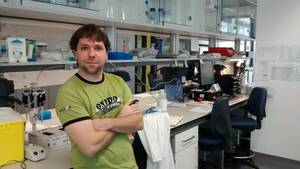Organizing the agents of the disease to know better multiple sclerosis

Multiple sclerosis is a very complex and heterogeneous disease. There are many factors that influence their appearance. On the one hand there are genetic factors, but on the other hand we must take into account environmental factors such as sex, vitamin D metabolism, Epstein-Bar virus, etc. In addition, the molecular mechanisms that influence the evolution of the disease are still unknown.
Researchers from the UPV/EHU's Department of Genetics, Physical Anthropology and Animal Physiology have investigated interactions among some of these factors. For this purpose they have used the network analysis. According to Haritz Irizar, a member of the research team, describing the statistical interactions of all factors, these would be grouped together, since not all interact with all, which would allow these groups to define subtypes of the disease and classify patients into much more homogeneous groups. According to him, there is more than one molecular pathology under the clinical umbrella known as multiple sclerosis, and network analysis is useful for building an etiological map of the disease: a map of causes and relationships between them. "This would significantly increase the possibilities of research," he concludes.

In the research work carried out so far, in general, it has tended to study in detail the small biological systems, "but if then we do not integrate the information of these parts of the system in global spheres, we will never come to understand the complete system," said the researcher. Thus, in the field of biomedicine the analysis of networks is being strengthened, where the details are abandoned and the connections or interactions (physical, statistics...) between elements of the entire system are collected and investigated.
Through network analysis, researchers conclude that the disease does not follow the same patterns for men and women. The mechanism by which the variant of a risk related gene affects the onset of the disease, has shown that this variant only produces danger in women (this variant is the 15:01 allele of the HLA-DBR1 gene).
In addition, comparing samples of patients and healthy people, alterations in the overall expression of genes have been analyzed both in the onset phase and in the emission phase. Thus, they have discovered that the molecular mechanisms associated with the pattern of reemission of shoots are different in women and men.
Finally, combining and comparing research data, a list of small non-coding RNAs has been obtained that can be used for future therapeutic interventions.





